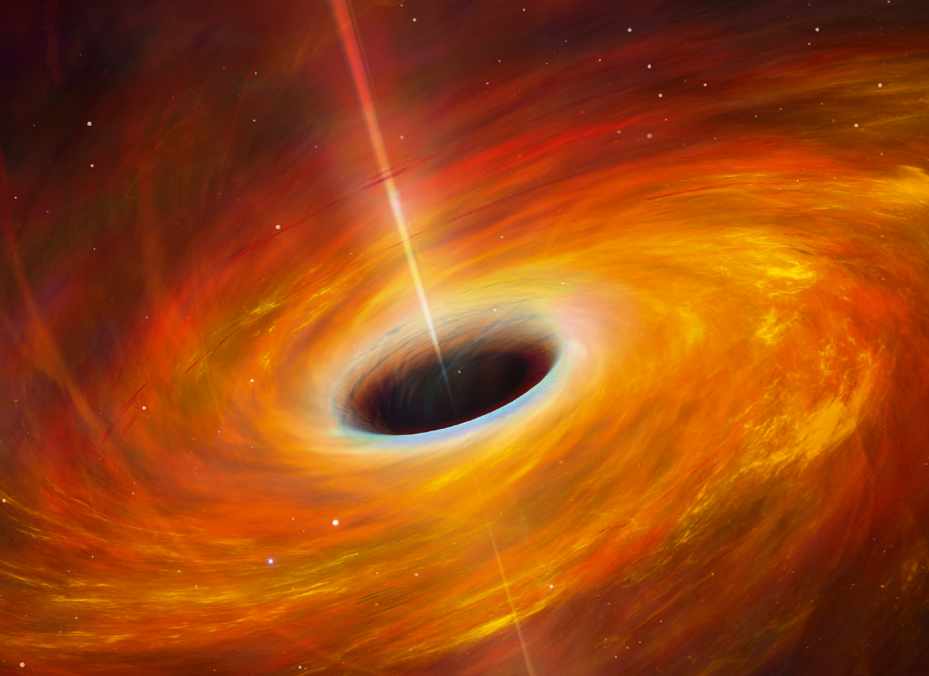
GETTY X2 ILLUSTRATIONS: PETE LAWRENCE, DANIEL BRIGHT
Scientists have long considered whether energy can be extracted from black holes. One possibility, called the ‘Penrose process’, makes use of the ‘ergosphere’ – the volume just above a rotating black hole’s event horizon where space-time itself is dragged along with the stupendous rotation. The physics of the ergosphere shows that if a mass approaching the event horizon is broken in two, so that one piece falls into the black hole, then the other piece could exit the ergosphere with more energy than it started with. The black hole essentially donates some of its angular momentum to this mass, thereby increasing its energy. A recent suggestion is that energy could be harnessed from this process by breaking and recombining magnetic field lines in the ergosphere. This would cause infalling matter to be naturally split into two plasma flows, one of which would receive an energy boost from the black hole. The Penrose process could also impart energy to one of the particle-antiparticle pairs, sometimes called ‘virtual particles’, that produce ‘Hawking radiation’.